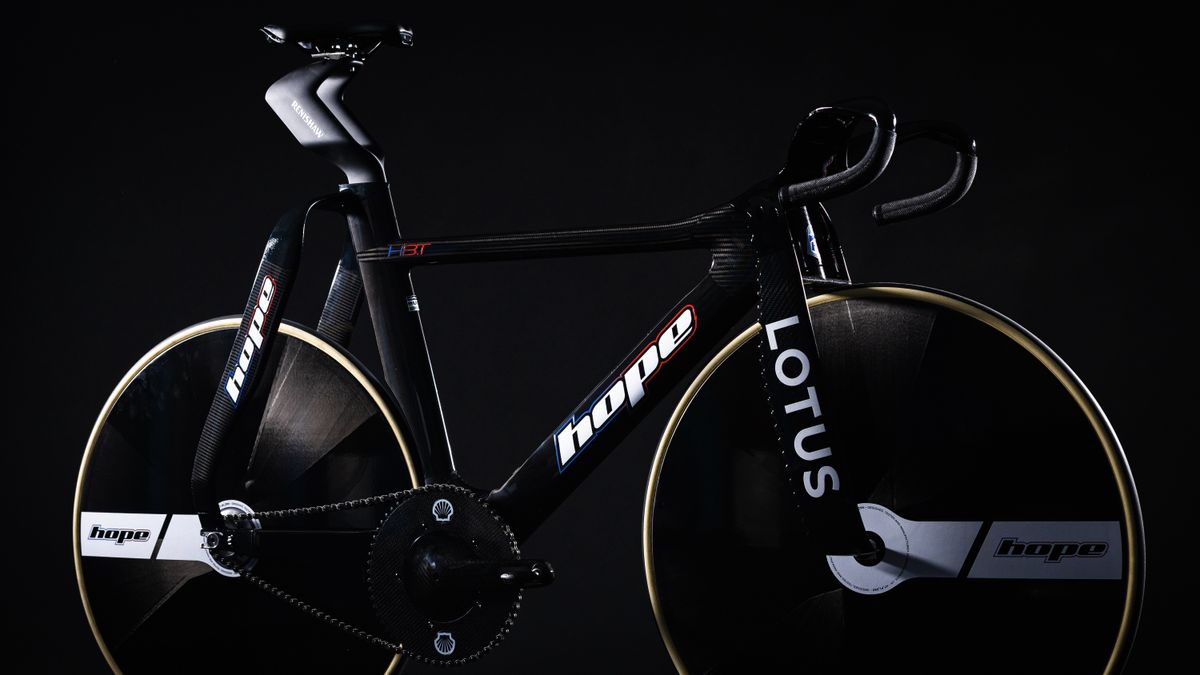Numerous new bikes land on the scene to some average fanfare. Some create a buzz earlier than they’re even formally launched, and others merely trickle onto the market completely unnoticed.
The unique Hope x Lotus observe bike precipitated a stir in contrast to any I’ve ever seen when it was launched in 2019 forward of the Tokyo Olympics. With the Paris Olympics on the horizon for 2024, and the Glasgow World Championships the final alternative for groups to make use of their new gear to be according to registration necessities, it means we’re getting a glimpse of a brand new beast.
As with debut albums, the primary iteration is a troublesome act to observe, however the troublesome second album is bringing ‘wobbly bits’ to the desk, whereas seemingly nonetheless maintaining the tried and examined insanity of ‘absurdly huge set fork legs’. This additionally follows the 3D-printed, extraordinarily bonkers-looking Toot Racing observe bike that we have lined, for use by the Argentinian observe squad. Is observe the place it is at for brand spanking new tech this 12 months?
What’s new?
The press materials we’ve got acquired consists of no actual tech particulars, however given the secrecy that usually surrounds Olympic-level tech, the place thousandths of a second separate winners, that is no nice shock. The quick model is that the bike remains to be a collaboration with Hope, Lotus, and Renishaw, an additive manufacturing firm (learn: 3D printing for Titanium).
By way of modifications from the previous bike, we must depend on visible clues. Up entrance, the obvious change is with the handlebars. The previous bar was a standard (within the context of the bike as a complete) trying set of bars with a flat crossbar, whereas right here the bars stand up from the highest of the headtube like a pair of ram’s horns.
With out geometry charts, it is unattainable to say, however this may occasionally point out that the entrance finish of the bike is decrease, compensated by the rise of the bars. We see this on the street with the Cervelo S5 and in a lesser manner with the brand new Bianchi Oltre.
In case your eyes aren’t instantly drawn to the entrance of the bike, they are going to be to the rear, particularly to the seatpost. Given the Renishaw brand, and the textured floor we’re assuming this part is 3D printed from Titanium. This is not uncommon in and of itself, as we have seen near-entire bikes printed from Titanium just like the Sturdy Cycles Fiadh, however the gaping gap created by a Y-shaped, rearward leaning set of blades is definitely completely new, although it does undoubtedly put us in thoughts of the IsoFlow gap seen on the rear of the new Trek Madone. It is assumed it has the identical operate, that being to create smoother airflow across the rear of the bike. Given it exists above the highest tube, between the rider’s legs, and in addition is interrupted by the bars because of their V-shaped profile, it is conceivable {that a} cylinder of unpolluted air may go by means of the bike and underneath the rider completely unimpeded.
Again to the entrance once more and the rear of the huge set fork blades, which we perceive had been the remit of Lotus, characteristic the identical crenulations that we have seen on the entrance of the seat tube of Filippo Gannas hour report bike, a motorbike which additionally featured 3D printing, insofar because the body was printed fully from aluminium. It is anticipated that that is to assist the air detach, and is an analogous sample, if at a smaller scale, to what we have seen on Princeton Carbonworks wheels and wheels just like the Zipp 353 NSW.
Lastly, from what I can decipher from the gloomy photos, the seatstays at the moment are straight, fairly than barely curved, however apparently they lack the wavy trailing edges that the fork blades have. The titanium elements that it appears are nonetheless getting used to affix the carbon items collectively are additionally now black fairly than gray. this might be beauty, however it would not be an ideal shock to study down the road that they’re coated in some sort of velocity coating that is extra aerodynamic, or maybe photodynamic?
What hasn’t modified?
The entire stance of the factor itself appears widespread between the 2 fashions. The huge fork legs, the seat stays that be part of above the gently sloping high tube. The final silhouette, principally, is unchanged, however with the small print reiterated and refined for 2024.
Using 3D-printed titanium remains to be a typical theme, although its utilisation appears to be used extra in some areas and fewer in others. The loopy seat publish, not seen in each picture – suggesting it is an possibility, not a prerequisite – is titanium the place earlier than it was carbon, whereas the entrance finish utilised extra carbon in locations the place Ti was beforehand used.
In addition to the overall form, the twin performance as each a mass begin bike (with drop bars) or a person/pursuit bike (with TT bars) remains to be current with only a swap out of the entrance finish. We nonetheless anticipate to see riders having individually tailor-made bar extensions to maximise their aero benefit.
Particulars are, as I discussed, skinny on the bottom, however as quickly as we all know extra we’ll replace this web page accordingly, so make sure you test again in.

